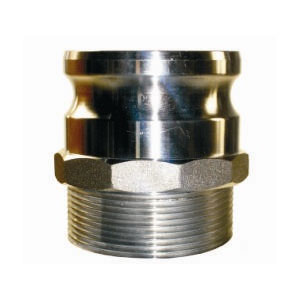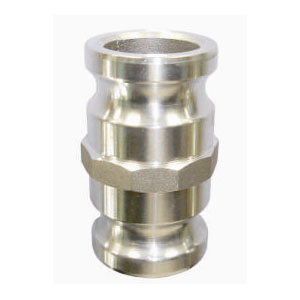
- English
- Español
- Português
- русский
- Français
- 日本語
- Deutsch
- tiếng Việt
- Italiano
- Nederlands
- ภาษาไทย
- Polski
- 한국어
- Svenska
- magyar
- Malay
- বাংলা ভাষার
- Dansk
- Suomi
- हिन्दी
- Pilipino
- Türkçe
- Gaeilge
- العربية
- Indonesia
- Norsk
- تمل
- český
- ελληνικά
- український
- Javanese
- فارسی
- தமிழ்
- తెలుగు
- नेपाली
- Burmese
- български
- ລາວ
- Latine
- Қазақша
- Euskal
- Azərbaycan
- Slovenský jazyk
- Македонски
- Lietuvos
- Eesti Keel
- Română
- Slovenski
- मराठी
- Srpski језик
When using reducing couplings to connect pipes of different diameters in industrial piping systems, how can we ensure a tight seal at the interface and prevent fluid leakage?
2025-10-17
In industrial piping systems, reducing couplings, essentially reducing joints, are critical components. Their function is to connect pipes of different diameters. For example, when a large pipe needs to be connected to a smaller one, a reducing coupling comes in handy. It connects the large-diameter pipe on one end to the small-diameter pipe on the other, allowing fluids in the piping system to flow smoothly through the different diameters, creating a smooth transition. Industries like petrochemicals and water supply and drainage often encounter situations where pipes of different diameters need to be connected, making reducing couplings indispensable.

The Dangers of Fluid Leakage
If a reducing coupling interface fails to seal properly and fluid leaks occur, the consequences are numerous. First and foremost, it wastes resources. Precious resources like oil and natural gas are wasted through pipe joints, a wasteful loss. Another concern is environmental pollution. Leaked fluids may contain harmful substances, which can pollute soil and water bodies. More seriously, leaks can also cause safety accidents. For example, leaks of flammable and explosive gases can explode when exposed to open flames. Leaks of toxic and harmful fluids pose a health threat to nearby personnel. Previously, leaks in hazardous chemical pipelines at chemical plants caused fires and explosions, damaging surrounding equipment and resulting in casualties.
Selecting Sealing Materials
When selecting materials, it is important to fully consider the fluid properties, temperature, and pressure within the pipeline. For example, rubber sealing materials offer excellent elasticity, corrosion resistance, and affordability, making them widely used in water and gas pipelines operating at room or low temperatures. However, at high temperatures, rubber can easily age and deform, significantly compromising its sealing performance. Asbestos sealing materials offer excellent high-temperature resistance. However, asbestos is hazardous to human health. Current safety regulations must be strictly adhered to when using them, and protective measures must be taken to reduce the inhalation of asbestos fibers. Metal gaskets are also a commonly used sealing material. They are strong and resistant to heat and pressure, making them ideal for high-temperature and high-pressure piping systems. For example, in some pipelines in the petrochemical industry, where temperatures and pressures are high, spiral wound gaskets are used. These gaskets are made by alternating windings of metal strips and materials such as graphite. They offer excellent sealing performance and can accommodate thermal expansion and contraction.
Preparation Before Installation
Before installing a reducing coupling, thorough preparation is essential. First, clean the pipe joints and the reducing coupling connection area to remove impurities, oil, and dust. Impurities can cause uneven sealing surfaces and affect sealing effectiveness. Wipe them with a clean cloth or a specialized cleaner. If oil is present, clean with a solvent and then dry. In addition to cleaning, carefully inspect the pipe joints and reducing coupling for defects. If any defects are found, replace or repair them promptly to ensure smooth connections, laying a good foundation for subsequent installation and sealing.

Correct Installation Methods
When installing a reducing coupling, ensure that the pipe and the coupling are concentric, meaning they must be aligned. If they are installed crooked, the seal at the joint will be compromised, leading to leaks. When tightening the connecting components, apply even force. Avoid tightening one part too tight and loosening another. This will result in uneven force on the joint and a loose seal.
Post-Installation Inspection and Testing
After installation, don't just leave it alone; you need to inspect and test it. First, perform a visual inspection. Carefully examine the joint between the reducing coupling and the pipe to check for any gaps, looseness, damage, or deformation of the sealing material. If everything appears to be normal, perform a pressure test. Fill the pipe system with fluid at a certain pressure, generally higher than the normal operating pressure. Observe for a period of time to see if the pressure drops and if there is any leakage from the joint.
Daily Maintenance
Daily maintenance is essential to ensuring the sealing performance of the reducing coupling joint. Regularly inspect the seals at the joints to check for signs of aging, deformation, or damage. If the seals are found to be defective, they must be replaced promptly. Also, be careful to avoid external impacts on the piping system. These impacts can cause the pipes and reducing couplings to shift or deform, compromising the seals at the joints.



